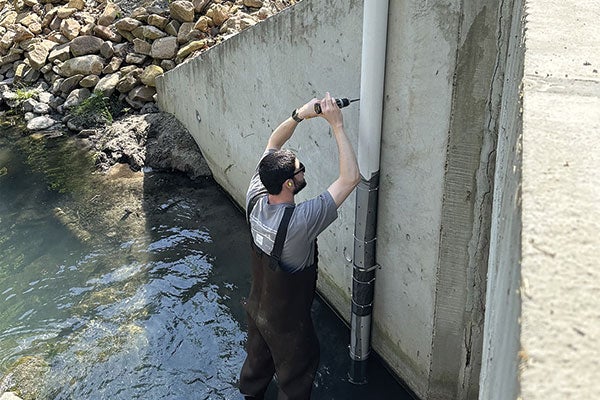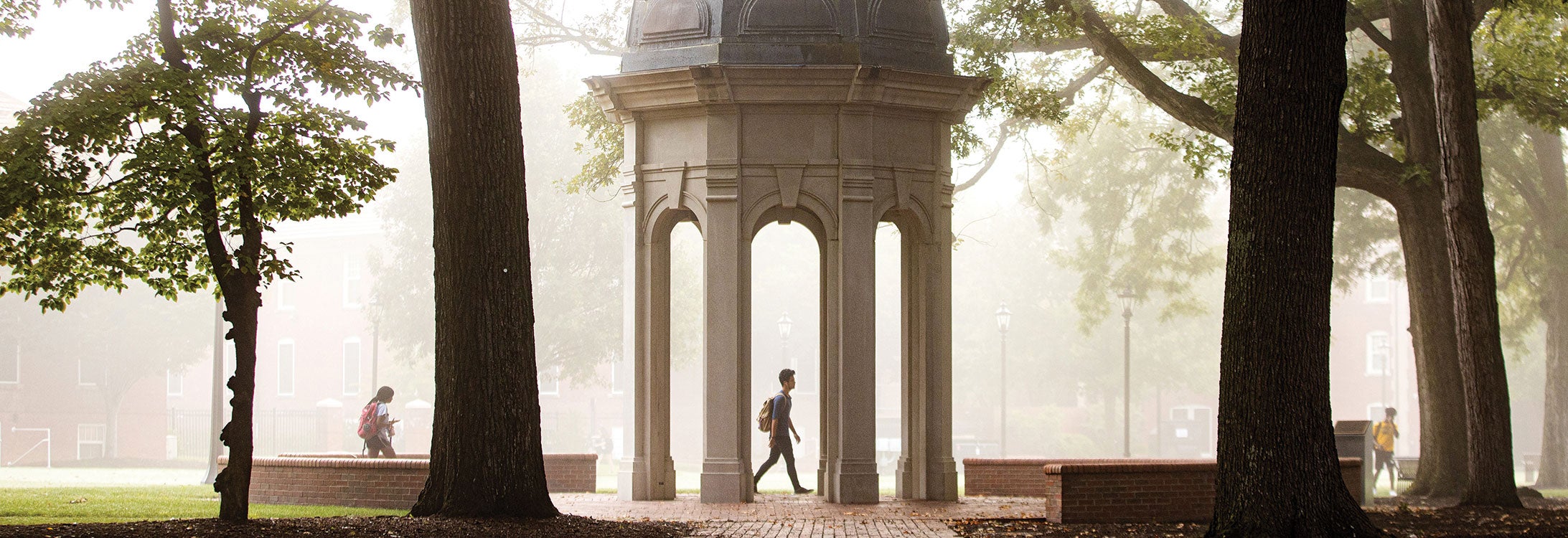Researchers study the effectiveness of reducing stormwater contaminants
Stormwater management is a critical part of any city’s infrastructure. Greenville, true to its name, has taken a green approach in this area.

Colin Finlay replaces damaged water sensors at Town Creek in Greenville to ensure proper water quality and monitoring at the Tar-Pamlico River Basin.
In 2020, in addition to pipes and culverts, Mike O’Driscoll, a professor in ECU’s Integrated Coastal Programs’ Department of Coastal Studies, and the city of Greenville worked together to install an infrastructure system known as regenerative stormwater conveyance. The RSC in downtown Greenville, near Town Creek, appears to be a simple waterway lined with rocks and stones and peppered with plant material, but is actually a high-tech approach to control stormwater.
Not only do they safely and appropriately divert stormwater, RSCs are designed to treat the runoff to ensure sediment and pollutants, like excess nitrogen, are filtered or captured.
Colin Finlay, a student in the interdisciplinary doctoral program in biology, biomedicine and chemistry, and Ariane Peralta, associate professor of biology in the Thomas Harriot College of Arts and Sciences, are assessing the RSC’s performance and effectiveness funded by $12,000 from ECU’s Water Resources Center and the North Carolina Water Resources Research Institute.
“There is a lot of energy surrounding the topic of stormwater infrastructure, and many in the state are invested in this issue,” Finlay said. “There is also a lot of optimism that we can use green stormwater infrastructure to mitigate multiple issues at the same time: Reduce flooding, improve water quality, support biodiversity and beautify urban spaces.”
Peralta said that with expanding urban areas in the United States and changes in precipitation patterns, stormwater management is of increasing importance in protecting aquatic ecosystems.
“Innovative green stormwater infrastructure has the potential to mitigate nutrient issues, handle large precipitation events and reduce nuisance flooding, support biodiversity, and enhance our cities by reducing urban heat islands and increasing green space,” she said. “However, it is important to test green infrastructure’s performance and use the results to make improvements. It is critical to study the role that microorganisms living in the sediments and waters of the RSC play in removing or worsening downstream nutrient issues.”
Finlay aims to determine the amount of nitrogen Greenville’s RSCs can process in a year and evaluate how changing precipitation patterns affect the device’s ability to filter the pollutants. His research includes monthly maintenance and downloading of the water sensor data, seasonal sediment sampling and laboratory testing of nitrogen, water sampling during storms, algal bloom monitoring and data analysis.
“The stormwater infrastructure in Town Creek does a good job of treating nitrogen when water slowly filters through the system,” he said. “During storm flow, water rushes through the system without time for nutrient treatment. While the nutrient treatment performance may decrease during storms, this infrastructure reduces flood risk by giving that water space to flow.”
Finlay is sharing his findings with Sound Rivers and the city of Greenville to ensure findings are distributed to the local community and stormwater professionals across the state. He hopes the results will help state leaders in making decisions about stormwater management.
